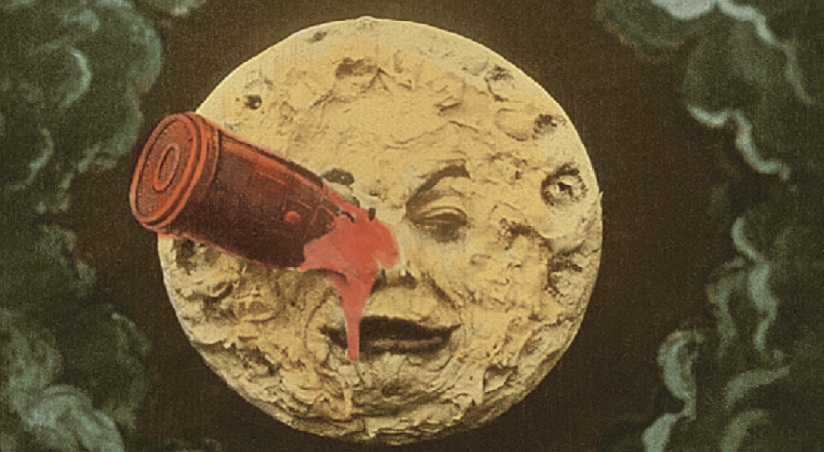
February 3, 2013, by Stephen Mumford
Film, Form and Function
Are there any classic movies you’re ashamed to say you’ve never seen? I rectified my biggest omission last week when I watched Citizen Kane, which many take to be the greatest film of all. At a movie industry dinner some months ago I found I was not the only one around the table for whom the 1941 Orson Welles classic was an embarrassing lacuna.
Not all film is art but much of it is. And as a form it is still relatively young. If one assumes that Georges Méliès’ 1902 Le Voyage Dans La Lune (pictured) was the first true movie, then it’s a form we’ve had a mere 111 years; and there was still a long way for it to develop from that first 14-minute silent fantasy. Compared to literature and theatre, this is an infant narrative form. But film does something unique, we must assume. Mustn’t it be able to do things that other forms are not? Arguably, what makes an art form survive and develop is that it serves a distinct purpose.
I wrote about this issue a while ago, prompted by the question of why theatre has survived the invention of film. But another angle to the same question would be to consider what film as a form was able to offer that was new and distinct and which enabled it to flourish and arguably outstrip all other art forms in popularity.
The artistic potential of cinema was immediately apparent, as evidenced in the stylish early black and whites The Cabinet of Dr. Caligari (1919), Nosferatu (1922), Häxan (1923) and Battleship Potemkin (1925), all of which are silents. Colour and sound added something but the essence of film was there with the moving picture. And with this form we were able to show a story: a story that was told not in words but more directly from showing. And unlike theatre, the director had a very careful control over what was shown. The eyes of a theatre audience might wander. But with film we can be taken close into the face of a character at the director’s willing. The shots direct our gaze carefully so that we see exactly what the filmmaker wants us to see. And that is not the only efficiency in storytelling that film gained us. Showing is far speedier than describing. I can watch the film version of Life of Pi (2012) in a small fraction of the time it would take to read the novel. There is undoubtedly something I lose in doing that – for literature also has distinct functions – but this efficiency opens up the philosophical ideas behind the story to a much wider potential audience.
Tracing out the distinctive functions of different art forms would no doubt be a sizeable undertaking. But a sense of it, I suspect, makes us better users of and consumers of those forms.

Like.